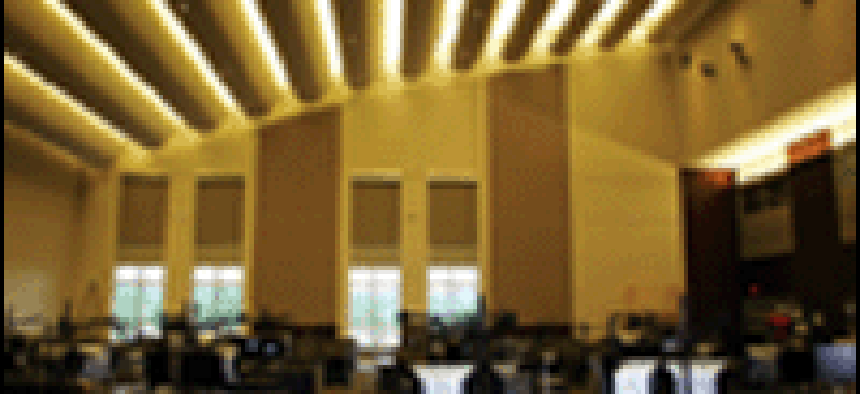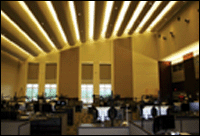D.C. unveils regional unified communication center

For Suzanne Peck, the District of Columbia's chief technology officer, the grand opening this week of the District's new 127,000-square-foot Unified Communications Center represented the culmination of an eight-year journey to create a state of the art communications and emergency command center for greater Washington.
For Suzanne Peck, the District of Columbia's chief technology officer, the grand opening this week of the District's new 127,000-square-foot Unified Communications Center represented the culmination of an eight-year journey to create a state of the art communications and emergency command center for the greater Washington region.Billed as one of the premier facilities of its kind in the nation, the UCC brings together for the first time, the city's emergency, nonemergency and public-service call-taking and dispatch functions in a single location, using a unified voice and data communications system. It will also house the city's regional interoperable wireless communications and control infrastructure. And ultimately it will serve as the regional command and control center, supporting federal agencies and 18 Virginia and Maryland municipalities, in the event of a regional emergency.Homeland Defense Department secretary Michael Chertoff said he had "what you might say is operations center envy" after touring the new $116 million facility Tuesday. A total of $24 million in federal funds were contributed to help build the facility, according to Chertoff.Compared to the DHS' operations center, cobbled together in the basement of its aging urban headquarters, the UCC and its communication command center is a CTO's dream.Beneath the vaulting arc of an airport concourse-style ceiling, towering windows and a two-story tall montage of projected video screens featuring news and call-monitoring data, call-takers work the phones, aided by high-tech workstations engineered with a checkerboard of caller, mapping and municipal resource data displayed across three pipe-mounted flat-panel monitors.The bomb-resistant building has four separate communication channels feeding into its systems, so "you can't shut the facility down," said Peck. And every system in the operation is "clock-synchronized," she said, so that incidents can be monitored precisely and reported in relation to one another.Tributes by secretary Chertoff, Virginia Gov. Tim Kaine, Washington, D.C. Mayor Anthony Williams and other dignitaries, however, made it clear the new facility is vested with more than cutting-edge call-center technology.Built to house 350 staff members over a 24-hour period, the facility also pays attention to the high-touch aspects of working under stress, with an 11,000 square-foot child development center, exercise facilities, a brightly lit cafeteria and terrace retreat.Few made a secret that the new facility will be a shot in the economic arm for the District's Ward 8, rejuvenating an area just four miles south of the Capitol building. But its primary intent was, and remains, to reduce the city's rate of abandoned calls and improve answer and response times to emergency and nonemergency calls.According to Peck, 98.9 percent of 16,594 911- and 311-calls received at the center in the few days it had been operating were answered in five seconds or less; and in most cases, calls were answered in less than one second. That compares to an average of about 10 seconds nationally, for municipal call centers, she said.Among the agencies that will coordinate activities through the center:It remains to be seen whether the new facility will quell D.C. critics who complain that dispatchers still make too many mistakes directing fire, police and medical teams appropriately in response to emergency calls. But clearly, the new technology tools, and a facility where emergency managers can confer on the spot, should give D.C.-area first responders a welcome new advantage. Washington Technology's .

Wyatt Kash is the editorial director forsister publication,Government Computer News

The new 127,000-square-foot Unified Communications Center
- District Police and Fire E-911 (emergency) and 311 (public safety nonemergency) Call Centers
- District Emergency Management Agency
- Mayor's Emergency Command Center
- Mayor's Call Center (727-1000 for citizen assistance and service delivery)
- District Department of Transportation (DDOT) ? Traffic Management Division support system
- District Network Operations Center and Protective Services Division security control center
- Regional Incident Command and Control Center (RICCC).
Wyatt Kash is the editorial director forsister publication,Government Computer News
NEXT STORY: DHS to get hefty boost in funding bill

